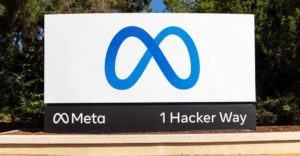Roku has taken a bold step toward what could be the future of online advertising by announcing it will adopt a technology called Unified ID 2.0 (UID2) across its premium streaming inventory.
The streaming platform, which serves some 83.6 million households, boasted that the technology, developed by The Trade Desk, will offer advertisers more precise prospect targeting and a more secure means of facilitating data collaboration with Roku.
“The UID2 integration takes ad campaign performance to a new level by enabling advertisers to better target, optimize, and attribute their campaigns. They also gain a secure way to facilitate data collaboration,” said Roku Director of Global Advertising Communications Sarah Saul.
“UID2 offers unparalleled benefits, empowering advertisers to activate first-party data and deliver more personalized ad experiences across platforms,” Saul told the E-Commerce Times. “This enhanced targeting precision not only increases demand and revenue potential but also fosters a more cohesive and efficient advertising ecosystem.”
The technology should make the platform more attractive to advertisers because it allows for better targeting, noted Rob Enderle, president and principal analyst at the Enderle Group, an advisory services firm in Bend, Ore. “Better targeting, if done right, should lead to higher rates of converting viewers to buyers,” he told the E-Commerce Times.
Roku’s adoption of UID2 allows advertisers to reach customers on its platform at scale, using first-party data, explained Ava Ginsberg, director of product marketing for paid media at Amperity, an intelligent customer data platform provider in Seattle. “This not only allows for more precise targeting but also more privacy-conscious targeting,” she told the E-Commerce Times.
It also allows Roku to work more seamlessly with The Trade Desk as a demand-side platform, which means it makes more of Roku’s inventory addressable for advertisers. “Early adopters of UID2 have reported notable improvements,” Ginsberg said. “These include enhanced match rates, better return on ad spend, and reduced customer acquisition costs.”
“If these benefits translate to the Roku platform, it could present significant opportunities for marketers in that space,” she added.
Causing Cookies To Crumble?
Mike Vannelli, head video producer at Envy Creative, a video ad production company in Simi Valley, Calif. asserted that Roku’s adoption of UID2 marks a significant step forward in the ad tech landscape.
“For marketers on Roku, this move can streamline targeting and measurement, offering a more precise and privacy-conscious way to reach audiences,” he told the E-Commerce Times. “UID2 enhances cross-platform tracking while respecting user privacy, making ad campaigns more effective and compliant with evolving regulations.”
Ross Kernez, director of SEO at Mavis, a national tire and vehicle service provider, explained that the Trade Desk technology uses encrypted identifiers generated from email addresses or phone numbers, establishing a secure mechanism for user tracking. “This encryption fortifies user data, mitigating risks of unauthorized access and misuse, thereby augmenting overall data security,” he told the E-Commerce Times.
Vannelli noted that UID2 offers a unified, open-source framework that can replace third-party cookies. “It uses hashed and encrypted email addresses to maintain user anonymity while providing detailed insights into consumer behavior,” he said. “This shift is crucial as it aligns with the industry’s push towards more privacy-focused solutions.”
“Roku’s embrace of UID2 indeed signals a broader readiness among online marketers to transition away from cookies,” he added. “The industry’s momentum towards alternative identifiers suggests a collective movement towards a future where privacy and personalization coexist.”
Kernez agreed that UID2 could serve as a viable alternative to third-party cookies. “It offers a privacy-compliant method for tracking and targeting users without dependence on third-party cookies,” he said. “By utilizing encrypted email addresses or phone numbers, UID2 empowers marketers to identify and engage users while honoring their privacy preferences. This paradigm shift ensures the sustained efficacy of digital advertising in a post-cookie era.”
Revolutionary Privacy Approach
Ginsberg maintained that UID2 is so much more than cookies. “It also provides a means of identifying and targeting users for advertising purposes but in a way that’s more aligned with current privacy expectations and regulations,” she said.
“Unlike traditional cookies, UID2 is built on a framework that emphasizes transparency and user consent,” she explained. “It allows advertisers to leverage first-party data, which is becoming increasingly valuable in a post-cookie world. This shift towards first-party data utilization enables companies to maintain personalized advertising capabilities while respecting user privacy preferences.”
“One of the key advantages of UID2 is its ability to function across multiple platforms and devices,” she continued. “This cross-platform capability addresses one of the limitations of traditional cookies, which often struggled with consistent user identification across different environments.”
However, she added that it’s important to note that UID2 is part of a broader transformation in digital advertising. “As the industry moves away from third-party cookies, various solutions are emerging, each with its own approach to balancing effective advertising with privacy concerns,” she said. “UID2 represents one of the more prominent efforts in this direction, gaining support from major players in the ad tech industry.”
“It’s pretty revolutionary in how it’s tackling the big privacy concerns we’re all hearing about these days,” she noted. “Instead of relying on those old-school third-party cookies that everyone’s getting wary of, UID2 is all about using first-party data in a way that respects user privacy. That’s a big deal in today’s climate.”
Ginsberg added that the technology is also revolutionizing how advertisers can measure performance by improving closed-loop measurement. This means that advertisers can track and understand individual customers’ behavior in the UID network in a privacy-first manner with more access and transparency into how campaigns are impacting customer behavior.
“While it’s looking pretty promising, we’re still in the early days,” she acknowledged. “It’ll be interesting to see how widely it gets adopted and what kind of impact it has on the industry as a whole. Still, from what we’re seeing so far, UID2 could be a game-changer in how we approach digital advertising, especially when it comes to balancing effectiveness with privacy concerns.”
UID2 could be a boon for Roku in the current home entertainment environment. “Roku consistently ranks as one of, if not the top third-party set-top box solution,” Enderle observed. “However, with TVs gaining this capability as a native function, they are at risk. Finding ways to stand out with users and advertisers is as much about defending what they have as it is about expansion. This solution should help them do both.”
























































Social Media
See all Social Media